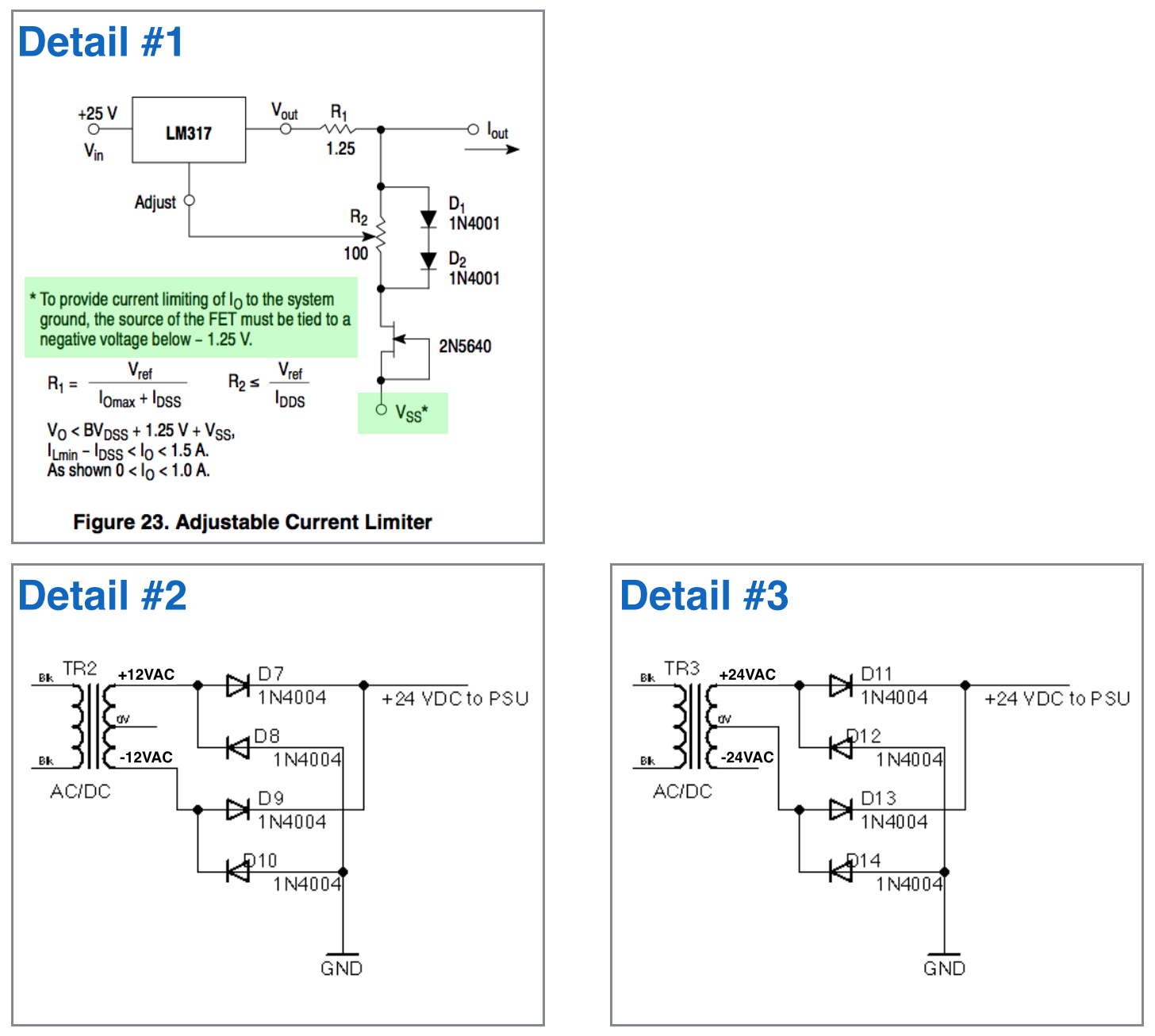I’m building a bench power supply based on two LM317 with the following specs:
- Input: 127VAC (from mains)
- Output: adjustable from 1.25VDC to 15VDC
- Current: limit adjustable from 100mA to 1.5A
In the LM317 datasheet from On Semiconductors there is a reference for the “current regulator” circuit that requires a negative voltage (below -1.25V) in the FET (detail #1 in the figure).
Since my power supply is not handling negative voltages I was wondering on using a 24VAC center tapped transformer (127VAC to 12-0-12) ignoring the center tap to power the whole circuit (detail #2 in the figure).
So, my question is how to derive the negative voltage necessary for the FET?
Also, If I decided to use the center tap of the transformer, changing it to a 48VAC one (127VAC to 24-0-24), I’ll use the full rectifier bridge between +24VAC a 0VAC and I’ll try to extract the negative from the -24VAC of the trafo. Since I only need something around -1.5V isn’t that a waste of cooper on the trafo (detail #3 in the figure)?
What is the best approach to power the power supply and also provide the necessary negative voltage for the current regulator circuit?

Answer
A 24VAC transformer will give you as much as 40VDC with a light load. That's pretty marginal for an LM317 with zero output. Way too close for comfort, in my opinion.
Anyway, if you were to use a third LM317 to regulate the input voltage down to +5VDC, you could use that 5V to power a 7660 charge pump to generate about -4.5V for your JFET current sink.

The filtered unregulated voltage likely is too close to the maximum 40V input voltage of the 317 (actually maximum difference between in and out). Maybe you can use 317HV, but an 18V transformer would be better.
Unfortunately the LM7805 is only good for 35V max input, so you'd need a Zener in series with the input of the LM7805 if you wanted to use that part to drop the voltage for the 7660 with a 24VAC transformer.
No comments:
Post a Comment